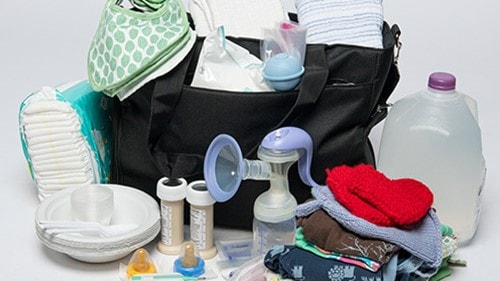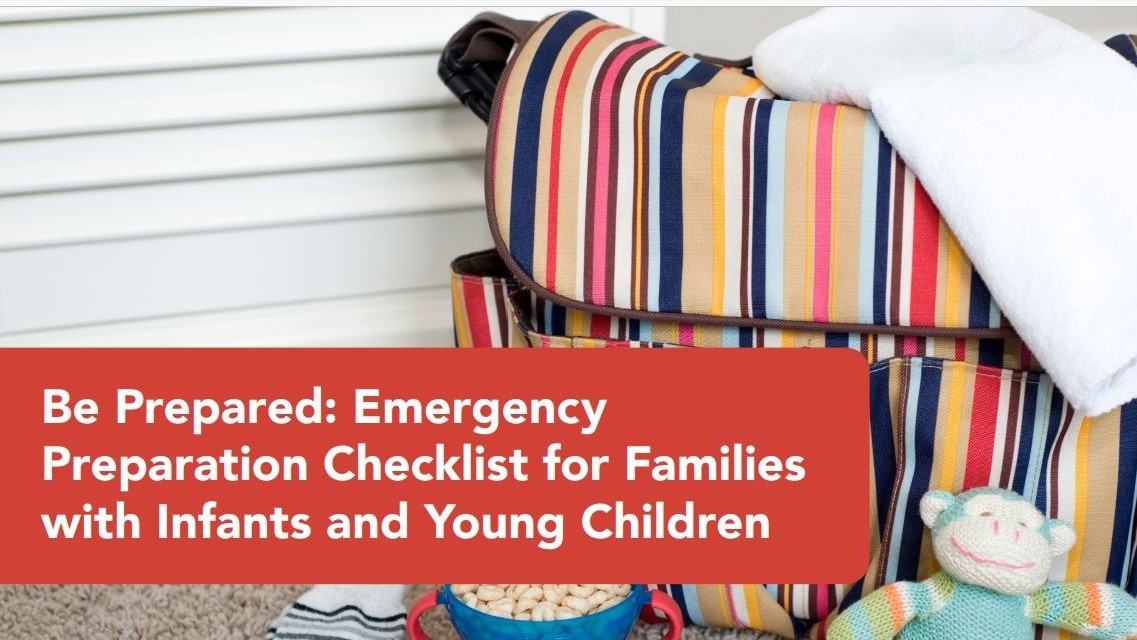At a glance
Families can use this checklist to gather materials to safely feed infants and young children in an emergency. Supplies needed for infants depend on how the infant is fed.

Be prepared
An emergency kit is a collection of items you may need in an emergency. There are things every family needs during an emergency. CDC's Emergency Kit Checklist for Kids and Families lists materials you need in case of an emergency.
If you have infants and young children, use the following information to make sure you have the infant and young child feeding supplies you will need.

For families feeding their child any breast milk
Your emergency kit should contain one or two boxes of disposable nursing pads. Do not pack reusable pads because they have to be laundered.
For families relying on a breast pump
Your family's emergency kit should contain:
- Breast milk storage bags or containers.*
- Small cooler with ice packs for breast milk storage.
- Breast pump and pump kit parts,* power cords, extra batteries.
- Manual pump* in case of a power outage.
For families feeding their child any formula
Your emergency kit should include:
- Ready-to-feed infant formula in single-serving cans or bottles.
- Powdered infant formula and preparation materials.*
- Formula cans/containers.
- Liquid measuring cup.
- Food-grade container with lid for mixing.
- Bottled water for mixing.
- Bottles and nipples.
Babies grow quickly so check your emergency kit monthly to be sure you have enough formula to meet your baby's current needs for several days. Replace formula that is expiring soon with newer supplies.
For all families of infants and young children
Your kit should include:
- A well-stocked diaper bag with:
- At least one large pack of diapers.
- At least two packs of baby wipes.
- Baby powder.
- Diaper rash cream.
- Baby wash and lotion.
- Re-sealable plastic bags (gallon size) for stashing dirty diapers and clothes.
- Disposable cups, dishes, and feeding spoons.
- Disposable bibs.
- Cleaning supplies for reusable infant and young child feeding items and breast pump parts:
- Wash basin.
- Scrub brush.
- Dish soap.
- Mesh bag for drying infant feeding supplies.
- A plastic container with a lid to contain all your cleaning and feeding supplies.
- Burp rags or smaller blanket.
- At least two pacifiers, if you use them.*
- Nonperishable baby food and snacks appropriate for your child's age.
- Baby carrier, such as a sling, wrap, or back or front carrier.
- Extra clothes.
- At least two extra blankets.
- Infant pain reliever with acetaminophen.
- Bulb syringe.*
- Infant thermometer.
- Child's medical records including vaccination record.
- Portable crib.
- Tape and marker for labeling.
- Safe drinking water such as bottled water.
